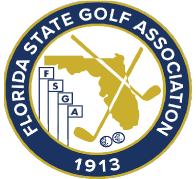We’ve all heard stories about pace of play but who is really responsible for it, how does it work, and is it the same for all events?
If you’re out for a Sunday round at the club or local muni, generally the course defines how long it should take to play and how it should be enforced. Many clubs will have a ranger or player assistant to monitor the pace and try to keep things moving.
In organized competitions, it gets a little different. Note 2 to Rule 6-7 states “For the purpose of preventing slow play, the Committee may, in the conditions of competition (Rule 33-1), establish pace of play guidelines including maximum periods of time allowed to complete a stipulated round, a hole or a stroke.”
That statement gives whoever is in charge of the competition, a lot of room to maneuver.
Generally, match play uses a different policy than stroke play; usually just straight against the clock. Once a match is out of position (behind the allotted time), players are individually timed. Once an official determines who is slowing down the match, warning and penalties are levied; including loss of hole penalties.
In stroke play events where tee times are used to start play, a combination of allotted time and position with the group ahead is normally used. The Committee usually defines what is “out of position” using terms such as “reaches a par-3 that is open”, “a group that has not cleared the tee of a par-4 when the green clears”, or “reaches a par-5 and the group ahead is already on the putting green”.
In recent years, the checkpoint system has been developed where a group must reach a checkpoint by a certain time and be within so many minutes of a group ahead. Many different systems have evolved.
The FSGA uses two checkpoints; holes 9 and 18 with a one stroke penalty for the first breach at any checkpoint. The USGA uses four checkpoints in Amateur events; holes 4, 9, 13 and 18. The first breach by a group is a warning and the second is a penalty. The Southern California Golf Association uses one checkpoint; hole 18. If your group does not make it on time, everyone in the group gets a two stroke penalty. The American Junior Golf Association uses six checkpoints!
The major professional tours do not use the checkpoint system. They use the more traditional out of position system. It seems rare for a PGA Tour player to receive a penalty. I guess they are more in the entertainment business than most state and regional golf associations.
Whatever system is used, they all have the same purpose; preventing slow play. Some seem to work better than others. Regardless of the system, it never feels good to tell someone they just incurred a penalty for slow play. That’s a whole different story!
Remember, use the index or the table of contents to find the correct Rule that applies to the situation and follow the Rules of Golf to help yourself to enjoy the game of golf.





